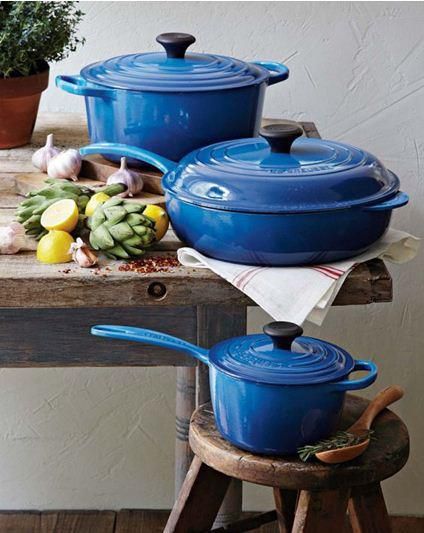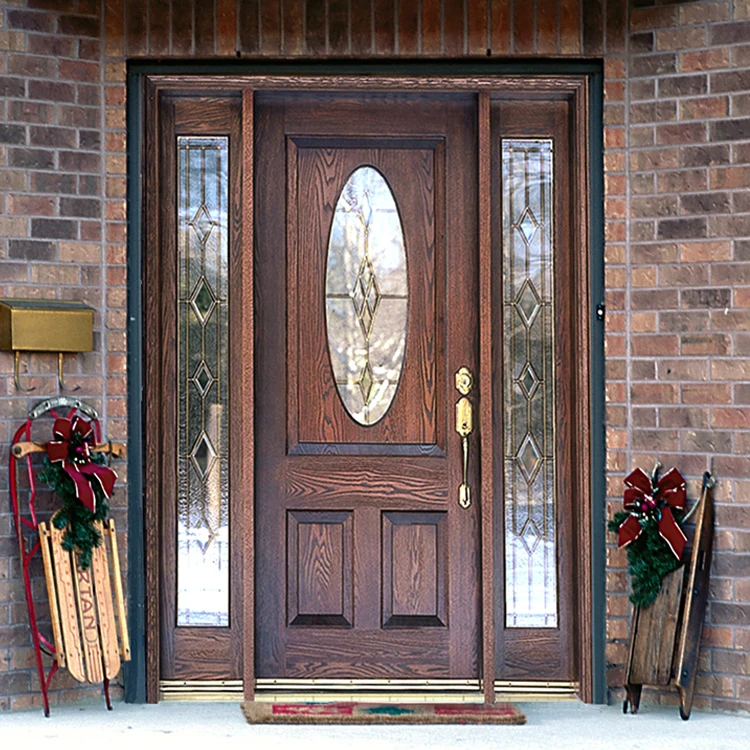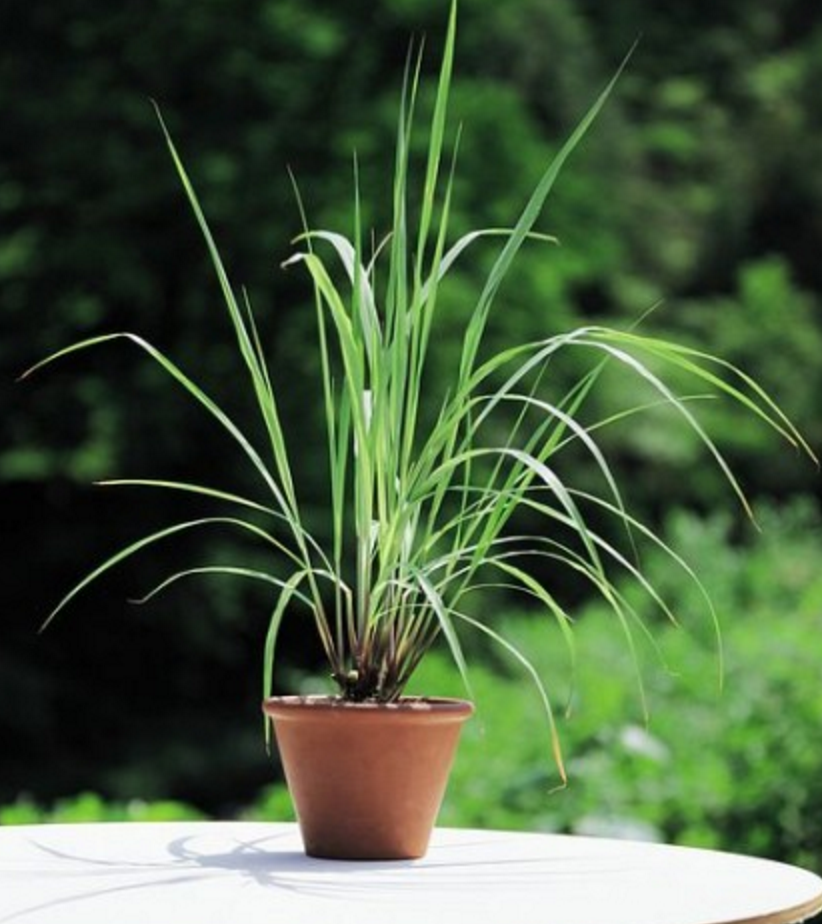How to clean natural stone tiles
How to clean Natural Stone and what you shouldn't do!
The stone needs a special care so that its beauty and elegance prevail over time. Simple care and maintenance will help preserve the stone’s beauty for generations to come. LSI Stone recommends periodic cleaning of the natural stone.
Before you start cleaning, that are some crucial steps to understand the situation that you are facing. In order to reduce the stone damages caused by natural and human abrasion on the Natural stone, we introduce you this article to help you achieve better results.
First, it is important to recognize what type of stone finish you have. Although there are many stone finishes, these three are the most used.
- Polished: glossy surface that emphasizes the color and markings of the material as well as reflecting light.
- Honed: satin smooth surface with little reflection of light. It’s mostly used for floors, stairs, treads, thresholds, and other locations where heavy traffic will wear off the polished finish.
That are many Do’s and Don’t’s when it comes to clean and protect your natural stone surfaces.
What you should Do:
- Do dust mop floors frequently.
- Do protect floor surfaces with non-slip mats or area rugs and countertop surfaces with coasters, trivets, or placemats.
- Do clean surfaces with mild detergent or stone soap.
- Do thoroughly rinse and dry the surface with clean, clear water after washing.
- Do blot up spills immediately.
What you should Not Do:
- Don’t use vinegar, lemon juice, or other cleaners containing acids on marble, limestone, travertine, or onyx surfaces.
- Don’t use cleaners that contain acid such as bathroom cleaners, grout cleaners, or tub & tile cleaners.
- Don’t use abrasive cleaners such as dry cleansers or soft cleansers.
- Don’t mix bleach and ammonia; this combination creates a toxic and lethal gas.

- Don’t ever mix chemicals together unless directions specifically instruct you to do so.
- Don’t use vacuum cleaners that are worn. The metal or plastic attachments or the wheels may scratch the stone’s surface.
Daily Cleaning Procedures and Recommendations
Countertop Surfaces:
- Clean stone surfaces with a few drops of neutral cleaner, stone soap (specific products from Lithofin for example), or a dishwashing detergent and warm water. Use a clean soft cloth for best results. Too much cleaner or soap may leave a film and cause streaks. Do not use products that contain lemon, vinegar, or other acids on marble or limestone. Do not use scouring powders or creams; these products contain abrasives that may scratch the surface.
Floor Surfaces:
- Dust mop interior floors frequently using a clean, nontreated dry dust mop. Sand, dirt, and grit do the most damage to natural stone surfaces due to their abrasiveness.
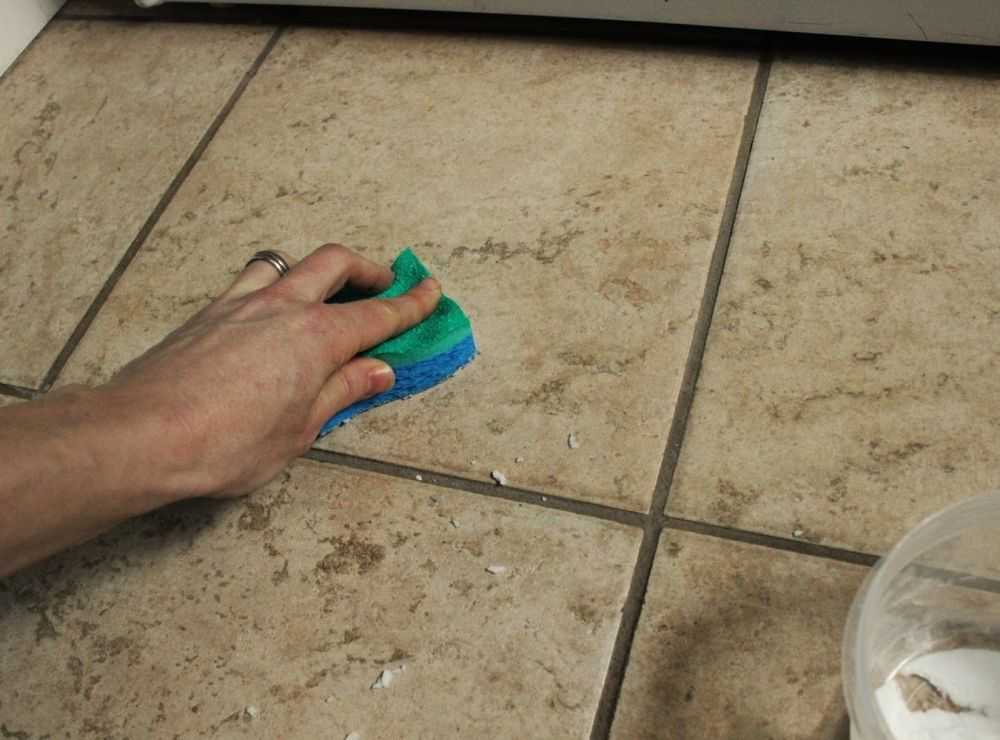 Mats or area rugs inside and outside an entrance will help to minimize the sand, dirt, and grit
Mats or area rugs inside and outside an entrance will help to minimize the sand, dirt, and grit
that will scratch the stone floor. Be sure that the underside of the mat or rug is a non-slip surface.
Normal maintenance involves periodic washing with clean, potable water and neutral (pH 7) cleaners.
Bath and Other Wet Areas:
- Soap scum can be minimized by using a squeegee after each use. To remove soap scum, use a non-acidic soap scum remover or a solution of ammonia and water (about 1/2 cup ammonia to a gallon of water).
Frequent or over-use of an ammonia solution may eventually dull the surface of the stone.
Outdoor Pool and Patio Areas:
- In outdoor pool, patio, or hot tub areas, flush with clear water and use a mild bleach solution to remove algae or moss.
Exterior Stone Maintenance:
- The large expanses of stone generally found on exterior applications may make it impractical to perform normal maintenance on a frequent basis.

Large installations, however, should be given periodic overall cleaning as necessary to remove accumulated pollutants. Using products like Lithofin MN Power-Clean.
General Guidelines for Stain Removal:
1. Remove any loose debris.
2. Wiping the area will spread the spill.
3. Flush the area with plain water and mild soap and rinse several times.
4. Dry the area thoroughly with a soft cloth.
5. Repeat as necessary.
6. If the stain persists or for problems that appear too difficult to treat, call your stone care professional specialist.
General Steps for any kind of Natural Stone Surface:
- Sweep to remove any dirt particles.
- Fill a recepient of warm water and use only water, or mix it with a small amount of neutral liquid “All-Purpose-Cleaner”, detergent or cleaning solutions specific for stone. Change the solution when it starts to get dirty.
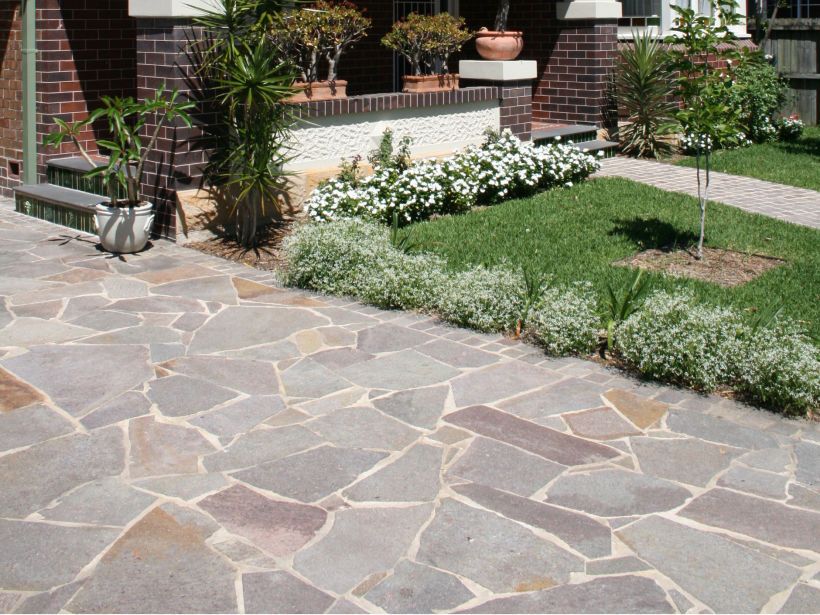
- Dip a microfiber towel, a duster or a mop into the water mixture and start cleaning.
- Wash the area by starting at the corner of the room and working methodically towards the room exit.
- Allow air circulation in the room for a quick drying.
Solutions to specific problems:
Oil-based stains (grease, cooking oil tar, food stains etc.)
- Scouring powder with bleach
- Household detergent
- Ammonia
- Mineral spirits
- Methyl Chloride
Organic Stains (paper, tea, coffee, fruit, bark and leaf litter etc.)
- Pour Hydrogen Peroxide 35% directly on the stain and add a few drops of ammonia. Leave until bubbling stops
- Repeat above add poultice
- Acetone or Toluene or Xylene
Biological Stains (algae, moss fungi, mildew)
- Dilute ammonia or Bleach
- Hydrogen Peroxide or Sodium Hypochlorite
Iron Stains Inorganic Metal Stains (iron, rust, copper, bronze)
- Poultice
- Sodium Citrate and Glycerin
- Ammonium Oxalate
- Oxalic Acid Orthophosphoric Acid and Sodium Salt of EDTA in water
- Dilute Hydrofluoric Acid
- Ammonium Oxalate
Ink
- Light colored marbles only use Bleach or Hydrogen Peroxide
- Dark marbles use Lacquer Thinner or Acetone
- Methyl Chloride
Scratches
- Re-polish
- Re-hone
Paint Stain
- Lacquer thinner or scraped off carefully with a razor blade.
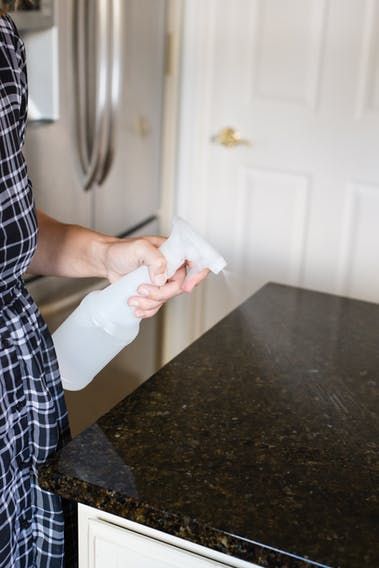
- Commercial liquid paint stripper.
- We don’t recommend the use of acids or flame tools
To read more about this matter from our font, click here.
How to clean stone floors – spruce natural stone tiles, plus, why vinegar is a no go
Real Homes is supported by its audience. When you purchase through links on our site, we may earn an affiliate commission. Here’s why you can trust us.
How to clean stone floors
(Image credit: Brent Darby)
Join our newsletter
Get the best home decor ideas, DIY advice and project inspiration straight to your inbox!
Thank you for signing up to Realhomes. You will receive a verification email shortly.
There was a problem. Please refresh the page and try again.
By submitting your information you agree to the Terms & Conditions and Privacy Policy and are aged 16 or over.Live in an old home and wondering how to clean stone floors? Stone floor tiles can lose their sparkle over time, and the grout can discolor. Fortunately, most types of stone are easy to care for and keep clean with some simple maintenance.
Fortunately, most types of stone are easy to care for and keep clean with some simple maintenance.
The type of stone in this particular project is travertine, so if you're cleaning marble or another type of stone like limestone, check the product suitability and if possible, contact the original supplier for advice on the correct products to use. From deep cleaning stone floors to how and why to seal natural stone tiled floors, we have all the know-how and instructions for you to follow below.
- Check out our pro tips on cleaning a floor properly.
We spoke to Harriet Goodacre, Brand Communications Manager and Tile Consultant at Topps Tiles who says, 'Natural stone is particularly absorbent so when choosing any type of stone, it’s important to consider the end use. All natural stone needs to be sealed before use to ensure it doesn’t absorb moisture or dirt and avoids staining, the sealing requirements differ between materials.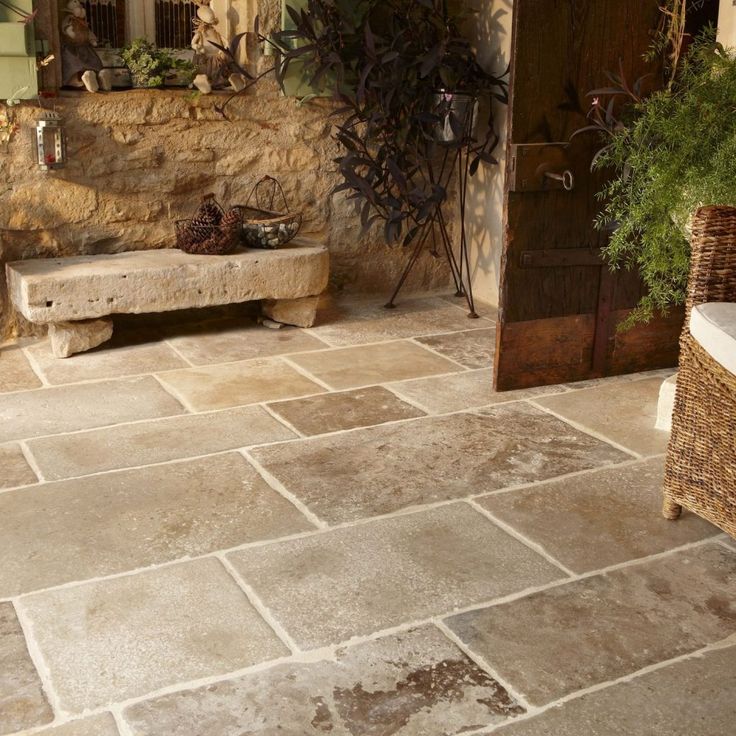 '
'
How to clean stone floors
You will need…
- Bucket
- Various scrubbing brushes and cloths
- Mop
- Long-handled squeegee
- Long-handled decorator’s foam roller
- Rubber gloves
- Stone floor care products. I used Lithofin MN Power-Clean detergent, MN Stain-Stop impregnator and MN Easy Care cleaner
Can you clean stone floors with vinegar?
Although cleaning with vinegar can work on other floor types, it's acidic and will eat away at the surface of your stone flooring. It should be avoided at all costs along with any other acidic solutions containing white vinegar, lemon or ammonia.
- Best tile cleaner: 6 smart picks to spruce up your tiling
1. Prepare carefully before starting
If possible find out what products were used when the tiles were originally laid. Always test new products on an inconspicuous part of the floor first, such as a dark corner. Use products as directions state and wait for a few days before tackling the main floor to check there are no adverse reactions.
Use products as directions state and wait for a few days before tackling the main floor to check there are no adverse reactions.
2. Choose the right products
When cleaning and sealing real stone floors, use a detergent formulated for calciferous stone (travertine, marble or limestone) as general floor cleaner may contain acid that can etch the surface. Dilute detergent with water in a ratio of 1:5 and apply generously with a sponge; use a long-handled squeegee for larger areas. Try a stronger solution if very dirty.
Shop stone floor cleaner...
£7.99
View Deal
£8.15
View Deal
3. Scrub away at ingrained dirt
Allow the product to work for 10 to 20 minutes, periodically scrubbing badly stained areas.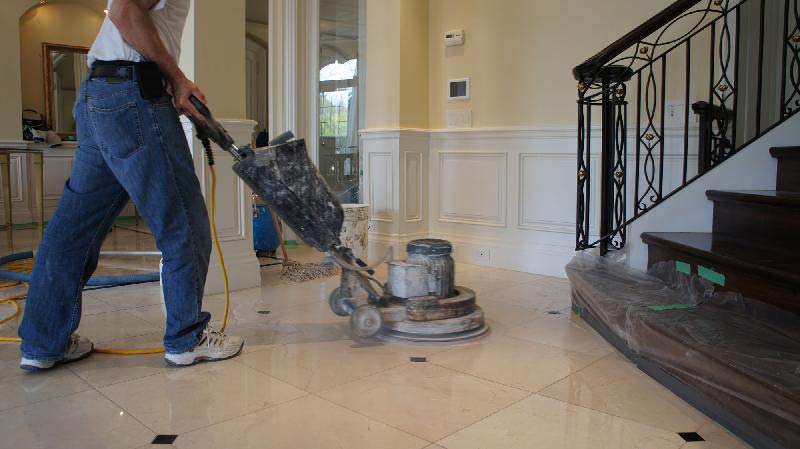 The grouting, being rougher than the stone, is particularly susceptible to ingrained dirt and grease. Experiment with different types of brush – we found a nylon bristled washing-up brush worked very well.
The grouting, being rougher than the stone, is particularly susceptible to ingrained dirt and grease. Experiment with different types of brush – we found a nylon bristled washing-up brush worked very well.
Today's best nylon washing up brush deals
17 Amazon customer reviews
☆☆☆☆☆
£7.99
View Deal
4. Wipe up residue and rinse
Wipe away the dirty cleaner. Rinse using your best mop and a bucket of clean water. Go over the stone floor tiles with an old towel to reduce drying time. Once dry, check if the tiles need to be resealed by leaving a few drops of water on the surface. If water soaks in, the floor needs an application of impregnator.
Today's best mop for tiles deals
No price information
Check Amazon
How to seal stone floor tiles
Keep your stone floor tiles looking good for longer by sealing them. Goodacre says 'There are different types of sealant depending on the type of stone and its finish, for example unpolished versus polished, so it’s important to purchase the correct sealer with your tiles. Replacing your sealer depends on the stone chosen and the wear and tear it goes through, is it used in a particularly wet area or a busy hallway with constant dirty footprints? If so you might want to consider resealing your type of stone every six months to ensure the avoidance of staining.'
Goodacre says 'There are different types of sealant depending on the type of stone and its finish, for example unpolished versus polished, so it’s important to purchase the correct sealer with your tiles. Replacing your sealer depends on the stone chosen and the wear and tear it goes through, is it used in a particularly wet area or a busy hallway with constant dirty footprints? If so you might want to consider resealing your type of stone every six months to ensure the avoidance of staining.'
1. Apply a stain prevention layer
Before sealing your floor tiles they must be completely dry. Leave for several days if possible.
Working in small areas, apply impregnator evenly with a long-handled foam roller until the surface is wet. Add more as necessary, ensuring the floor is uniformly wet for between five to 15 minutes. The impregnator must be absorbed by the stone.
- Find more stain removal tips in our guide.
Shop stone floor sealers. ..
..
£19.91
View Deal
£21.95
View Deal
£61.82
View Deal
Show More Deals
2. Remove any excess solution
After 15 minutes of application any impregnator remaining on the surface of the floor tiles must be removed and not allowed to dry on to the surface. Remove excess with a squeegee and a clean cloth – a tatty cotton T-shirt is just the job. Check over the whole surface to ensure there’s an even finish.
- How to choose real stone floor tiles
3.
 Stay off the floor until surface is dry
Stay off the floor until surface is dryDon’t let anyone walk on the floor until it is dry. This depends on temperature but after one to two hours it should be safe to walk on in socks. Treat the floor with care, don’t cover with rugs, or move furniture about, and wipe up spills immediately. The treatment can take three days before it is fully cured.
(Image credit: Future/Clive Nichols)
How to maintain stone floors
Sweep stone floor tiles frequently to protect against dirt and mop up spills as they occur. A regular wash with a squeeze of cleaner will prolong the life of the sealant and add lustre. Once a year check the stone for porosity using a few drops of water, and apply protective solution when required. A special cleaner for stone floors is best. Goodacre suggests 'Once your tiles are sealed you need to regularly maintain the sealant on the surface as it will wear away over time. It’s especially important to prolong the life of your sealer by using the correct cleaning products. Always use a PH neutral cleaner and a damp cloth, or on natural stone floor tiles, a steam mop.'
Always use a PH neutral cleaner and a damp cloth, or on natural stone floor tiles, a steam mop.'
- Cleaning wooden floors elsewhere? We can help.
Microfiber Mop Floor Cleaning System - Washable Pads Perfect Cleaner for Hardwood for $39.95 at Amazon
Use it dry or wet.
What a result.
Natural Stone Cleaning Technology
How to Clean Natural Stone
Natural stone is porous in nature, so maintenance is slightly different from traditional ceramic tiles. If your apartment has natural stone, then this article will be useful for you. In stores, as a rule, there are many cleaning products designed for different degrees of pollution and damage to the stone. Cleaning agents can stain the surface of the stone very thoroughly, damage it and make it dull. Stone cleaners must never contain acid or bleach. If you want to clean natural stone using only your home arsenal, then make a light solution of vinegar and water, with which you can make minimal etching of the material.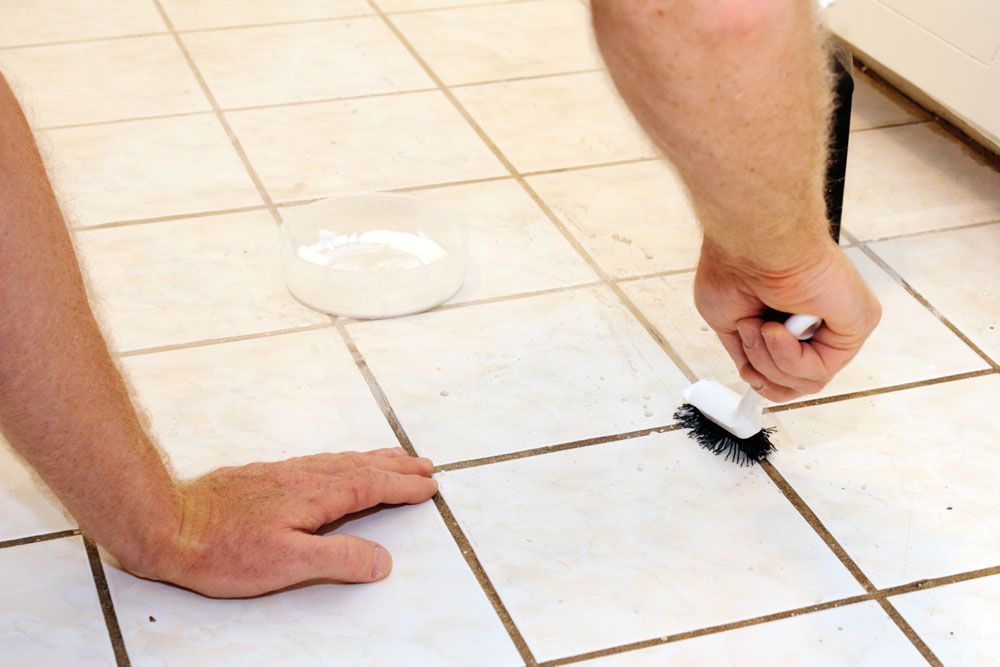 In general, for stone cleaning, it is recommended to use cleaners with a neutral base. Before using various solutions, it is necessary to vacuum the surface and wipe off the dust, because if your feet and dirt come into contact, you can scratch the surface of the stone. For cleaning natural stone such as limestone, marble or granite, premium penetrating sealers are recommended and work especially well on polished and honed surface types. Types of sealants that are designed to penetrate deep and impregnate the surface work great for both indoor and outdoor use. There are varieties of sealants that can improve the dark surface, enrich and emphasize the natural color and beauty of this material. I recommend that you always check the surface of the stone for the presence of tarnished parts in order to take advantage of the situation in time and eliminate this problem with a sealant. Some of the grout, when exposed to the corners of the tile, can also darken the edges of the tile, so clean the stone right away.
In general, for stone cleaning, it is recommended to use cleaners with a neutral base. Before using various solutions, it is necessary to vacuum the surface and wipe off the dust, because if your feet and dirt come into contact, you can scratch the surface of the stone. For cleaning natural stone such as limestone, marble or granite, premium penetrating sealers are recommended and work especially well on polished and honed surface types. Types of sealants that are designed to penetrate deep and impregnate the surface work great for both indoor and outdoor use. There are varieties of sealants that can improve the dark surface, enrich and emphasize the natural color and beauty of this material. I recommend that you always check the surface of the stone for the presence of tarnished parts in order to take advantage of the situation in time and eliminate this problem with a sealant. Some of the grout, when exposed to the corners of the tile, can also darken the edges of the tile, so clean the stone right away. When choosing a sealant, read the reviews, look at the rating of each, so as not to be mistaken and buy the really best representative of this genre.[/vc_column_text][/vc_column][/vc_row]
When choosing a sealant, read the reviews, look at the rating of each, so as not to be mistaken and buy the really best representative of this genre.[/vc_column_text][/vc_column][/vc_row]
Stone cleaners
To clean stone surfaces, use only detergents designed for this purpose. These substances must not contain acids and must consist of neutral pH cleaners that will not damage the surface even if it has a light coating of wax. Before cleaning, the surface of the stone must be moistened with clean water. The water will keep the cleaning solution on the surface of the stone, and distribute it over the entire area, thus cleaning will be more effective. Dilute the solution according to the manufacturer's instructions, apply it to the stone surface using a special sponge or mop.
If you need to apply the solution to the wall, kitchen counters, or countertops, you can use a regular spray bottle for this purpose. It is necessary to place the solution on the surface, using a sponge, a synthetic mop, a brush, or using a special floor drying machine. After that, you need to apply the solution. After cleaning the stone, you can use a special spray. So you can emphasize the brilliance and beauty of the polished stone. We recommend spraying the surface over a full piece of the area to clean the entire surface. The frequency of cleaning is difficult to predict, do this work on a whim, when you already see that the stone needs cleaning. In general, many cleaners cannot recreate the original luster of a stone, but they can help maintain the original brilliance and cleanliness.
After that, you need to apply the solution. After cleaning the stone, you can use a special spray. So you can emphasize the brilliance and beauty of the polished stone. We recommend spraying the surface over a full piece of the area to clean the entire surface. The frequency of cleaning is difficult to predict, do this work on a whim, when you already see that the stone needs cleaning. In general, many cleaners cannot recreate the original luster of a stone, but they can help maintain the original brilliance and cleanliness.
Now ceramic tiles are cleaned in the following way!
How to Deal with Extremely Dirty Surfaces
To effectively remove stubborn dirt, grease, and other deposits on stone surfaces, you need heavy duty, environmentally friendly, safe stone cleaners. I recommend that you apply a solution of cleaner and water, which are mixed, according to the manufacturer's instructions.
Natural stone surfaces can be cleaned in two ways:
• Using sponge, synthetic mop and soft bristles;
• As an option, a semi-wet machine can be used;
Using this technology, you can remove stains and smoke from the grout, as well as from the surface of the stone.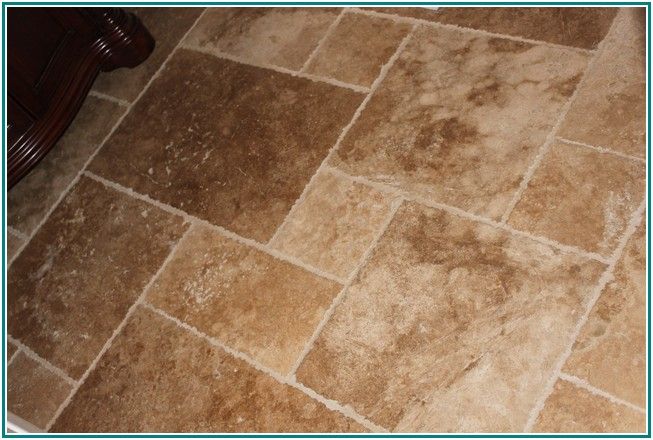
To recap
If your marble finish has started to fade, is slightly scratched and in need of etching, you can restore the shine by using special marble cleaning products. The process is usually recrystallization, in which the stone is given its original brilliance and luster.
I hope you understand how natural stones are cleaned! And laying tiles is best done using special tools that are called tile leveling systems. Using them, you will do the job very quickly, and most importantly, with high quality!
In our online store you can buy SVP tile leveling system on the most favorable terms! All products are of the highest quality! Made of ultra durable ABS plastic and has all the necessary documentation: quality certificate, certificate, certificate of conformity!
A cheat sheet for housewives: how to properly clean different types of tiles
No time to read? Watch the video!
1 Smooth ceramic tiles
These tiles are the least problematic.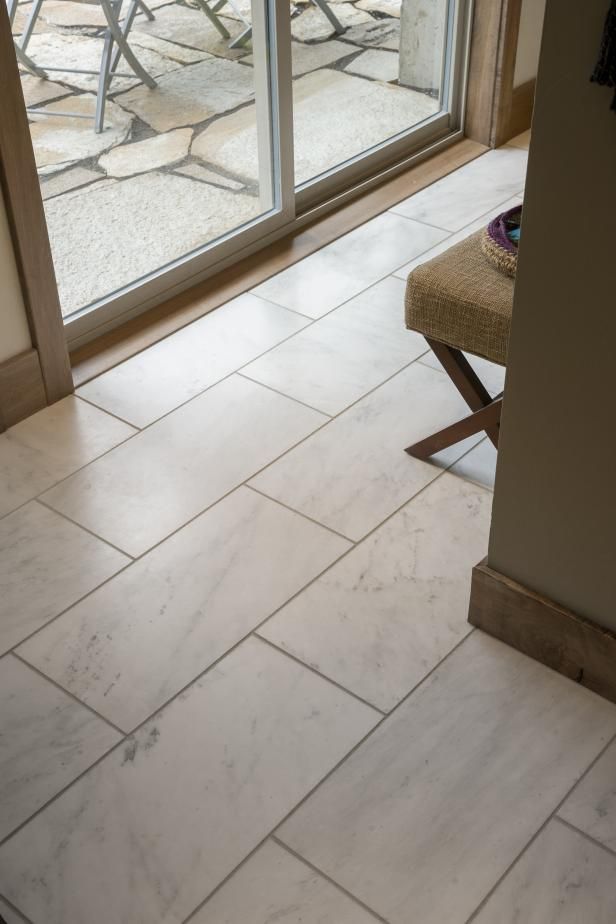 Due to the smooth surface, a little dust collects on it, and the dirt is easily wiped off. In addition, it is quite difficult to scratch or change color with a detergent composition. Here are a few tools you can use.
Due to the smooth surface, a little dust collects on it, and the dirt is easily wiped off. In addition, it is quite difficult to scratch or change color with a detergent composition. Here are a few tools you can use.
- Regular soap or dishwashing detergent.
- Any commercial ceramic cleaner. It is best to take gel-like or spray formulations to make it easier to apply and quicker to clean. If epoxy grout was used between tiles, discard acidic products.
- Glass cleaner. The composition for glossy black tiles is especially effective - it will not leave streaks on it.
- Folk remedies. Citric acid, soda and vinegar are suitable for those who want to use the safest and most natural remedies. And if you mix hydrogen peroxide, soda and dishwashing detergent, you can lighten darkened tile joints.
Instagram: @xoxodeco
Unsplash
-
Finishing materials
Which tiles are at the peak of fashion now: 7 trends and inspiring photos
2 Textured ceramic tiles
Textured tiles collect more dust and dirt and are therefore a little more difficult to clean. If the walls in the living room or in the corridor are lined with ceramics, it is enough to vacuum them once a week. Use a soft brush attachment to pick up dust more effectively and avoid scratching the surface.
If the walls in the living room or in the corridor are lined with ceramics, it is enough to vacuum them once a week. Use a soft brush attachment to pick up dust more effectively and avoid scratching the surface.
If the tiles are in the bathroom or kitchen, they should also be vacuumed to make cleaning easier. Next, use gentle cleaning products and a soft sponge. If you need to add shine, then at the end of cleaning it is worth wiping the surface with a mixture of water and vinegar in a 1: 1 ratio.
Instagram: @keramika_ugansk
Instagram: @keramika_ugansk
ShutterStock
3 Glass tiles and mosaics
Glass tiles and mosaics have a perfectly smooth surface and are tightly joined, therefore they repel dirt well. The main problem faced by the owners of such a finishing material is that it looks dull and is quickly covered with stains.
For starters, give up hard brushes and sponges - they will not remove plaque and will only scratch the surface.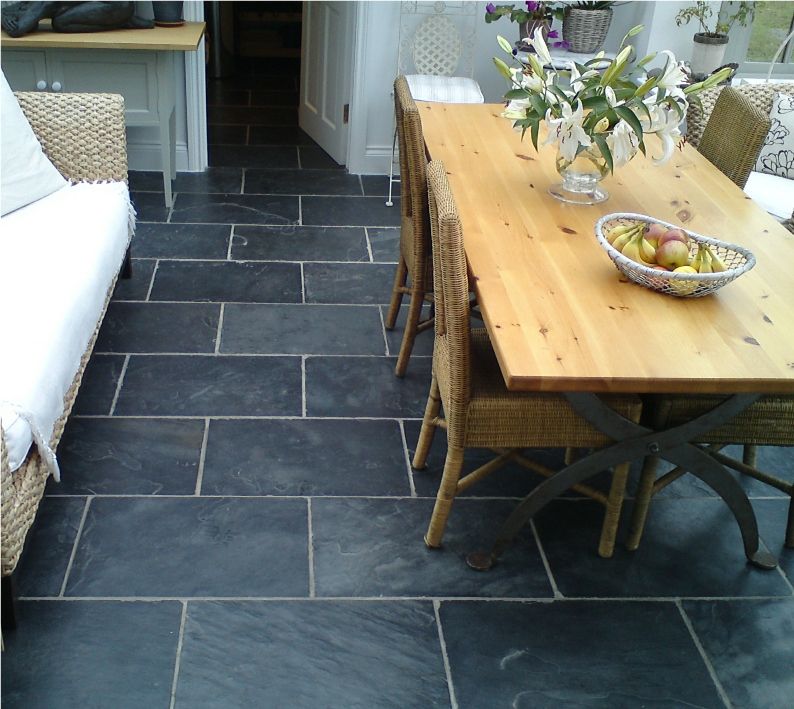 Carry out normal cleaning, rinse off the detergent and wait until the stains become visible. Then spray a mixture of water and vinegar on the wall with a spray bottle and wipe with a soft microfiber cloth. You can also use a store-bought glass streak remover.
Carry out normal cleaning, rinse off the detergent and wait until the stains become visible. Then spray a mixture of water and vinegar on the wall with a spray bottle and wipe with a soft microfiber cloth. You can also use a store-bought glass streak remover.
Instagram: @laezza.tile
Instagram: @laezza.tile
-
Cleaning
7 reasons why your apartment looks dirty even after cleaning
4 Natural stone tiles
It is important to remember that natural stone, even marble, is not as resistant to mechanical stress as it seems. Buy only those detergents that are suitable for stone surfaces, and avoid products that contain acids and alkalis, such as citric acid.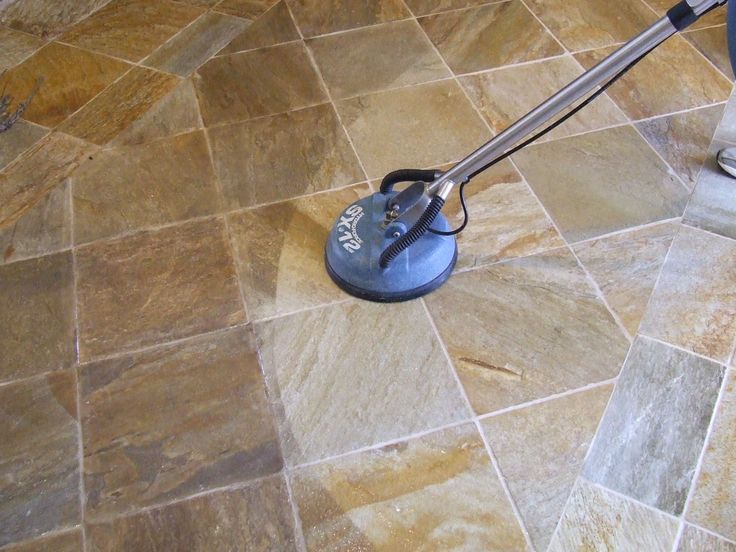
If marble tiles are in the kitchen, it is worth treating them with special sprays once a month. They form a protective film and prevent chemical reactions between the stone and various liquids.
Use a soft microfiber cloth to polish stone tiles at the end of cleaning.
Instagram: @dom_tvoej_mechty
Instagram: @dom_tvoej_mechty
-
Cleaning
How to clean bathroom tiles: 11 ways against all types of plaque
5 Metal plate
For stainless steel, copper and titanium tiles, special shop products should be used, usually recommended by the manufacturer. For other materials, mild detergents are suitable. Do not use hard metal sponges, abrasive cleaners, bleaches or ammonia.




